Monero Mining Explained: Is It Still Profitable In 2025?
We fully updated this article in November 2025 to reflect the latest Monero network data, mining economics, hardware recommendations, and regulatory developments, along with a clearer step-by-step framework for judging whether XMR mining still makes sense for you.
Monero (XMR) still sits at the top of the privacy-coin stack. It has deep liquidity, a long track record, a committed community, and a mining algorithm that keeps regular hardware in the game. That part hasn’t changed.
What has changed is how tight the margins feel.
Electricity prices keep creeping up, hardware isn’t cheap, and the Monero network is much stronger than it was a few years ago, which means more competition for the same block reward. So the real question is no longer “can you mine Monero?” but “does it make sense for you to mine Monero, given your own costs and goals?”
To answer that properly, you need more than a yes/no verdict. You need a clear framework: how Monero mining works under RandomX, how tail emission affects rewards, how to run the profitability math, what hardware actually makes sense now, how software and pool choice shape payouts, where regulation can bite, and what you do with the XMR you mine.
This guide follows that entire journey step by step, strictly along your outline. We start with a fast scan verdict, then dig into fundamentals, then move through costs, hardware, software, payout options, network health, regulation, storage, a practical setup checklist, and finally a user-profile-based verdict.
Monero Mining Fundamentals (RandomX, ASIC Resistance, and Tail Emission)
The next step is to understand what you’re actually doing when you mine Monero. Without that, the profitability math can feel like random calculator outputs. Here, we examine the core mechanics: Proof-of-Work, the RandomX algorithm, and the tail emission model that defines how rewards behave in the long term.
How Monero Mining Works
At the core, Monero uses Proof-of-Work (PoW):
- Transactions are broadcast to the network.
- Miners bundle pending transactions into candidate blocks.
- Miners’ hardware races to find a valid solution to a cryptographic puzzle tied to that block
- The first miner (or mining pool) that finds a valid block header broadcasts it
- Other nodes verify the block; if valid, it gets added to the blockchain.
- The miner receives the block reward (newly created XMR) plus transaction fees
You can find the protocol and consensus details in the Monero developer guides.
From your perspective as a miner, you’re renting out your CPU cycles to the network. In return, you receive XMR with each block your rig (or your pool) helps produce. The more hash rate you contribute relative to the network, the more frequently you get paid. This is why relative hashrate matters more than raw numbers. Ten kilohashes per second is good or bad, depending on whether the network is at 100 KH/s or 10 GH/s.
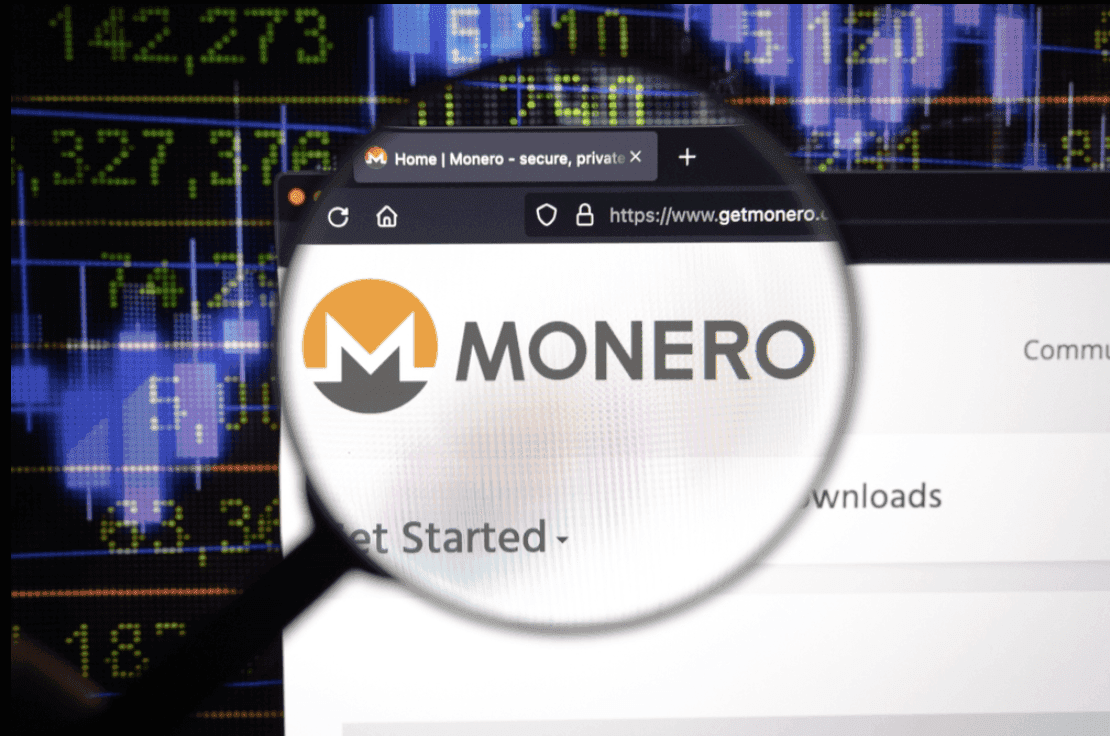
RandomX and Why Monero Is CPU/GPU Friendly
Now we get into RandomX, the PoW algorithm Monero uses.
RandomX was introduced to keep mining on general-purpose hardware and make ASICs non-competitive. It does this by:
- Using random code execution and large memory access patterns, which suit CPUs with strong L3 cache.
- Designing the algorithm in a way that doesn’t map cleanly to ultra-specialised ASIC circuits.
- Checking implementation frequently through audits and upgrades to maintain the property.
You can read the full technical spec and reference implementation on the RandomX GitHub repository.
What this means in practice:
- CPUs are the primary mining hardware for Monero.
- GPUs can participate, but they usually don’t beat a well-tuned CPU on a hash-per-watt basis for RandomX.
- ASICs designed for SHA-256 or other algorithms are essentially useless for XMR.
This keeps the barrier to entry relatively low. You don’t need a warehouse of ASICs; you can start with a decent CPU. At the same time, it pushes you to care about efficiency, because you’re competing with thousands of other CPUs worldwide.
Block Rewards and Tail Emission Explained
Monero’s reward system has two phases:
- Main emission phase: XMR supply increased quickly toward roughly 18.132 million XMR. Block rewards gradually decreased along a smooth curve.
- Tail emission phase: once that threshold was reached, block rewards stopped shrinking and instead flattened to about 0.6 XMR per block (plus fee) forever.
The emission curve and tail emission design are explained in Moneropedia’s emission entry.
Why do this?
- If rewards went to zero, miners would rely entirely on transaction fees. Fees can be volatile and might not be enough to keep a large, decentralised mining set online.
- A small, constant tail emission keeps a steady subsidy for miners, which helps the network maintain security over decades.
- Inflation from tail emission trends down as total supply grows; the absolute amount stays constant, but the percentage of new supply relative to existing supply shrinks over time.
For miners, tail emission means two key things:
- There is always a block reward on the table.
- You are competing for a fixed pie (0.6 XMR × 720 blocks = 432 XMR/day), not for a reward that keeps halving like Bitcoin.
That fixed daily issuance is what your hashrate slices up. As more hashrate comes online, each slice gets thinner, unless you also scale or optimise your own rigs
Is Monero Mining Profitable in 2025? The Framework
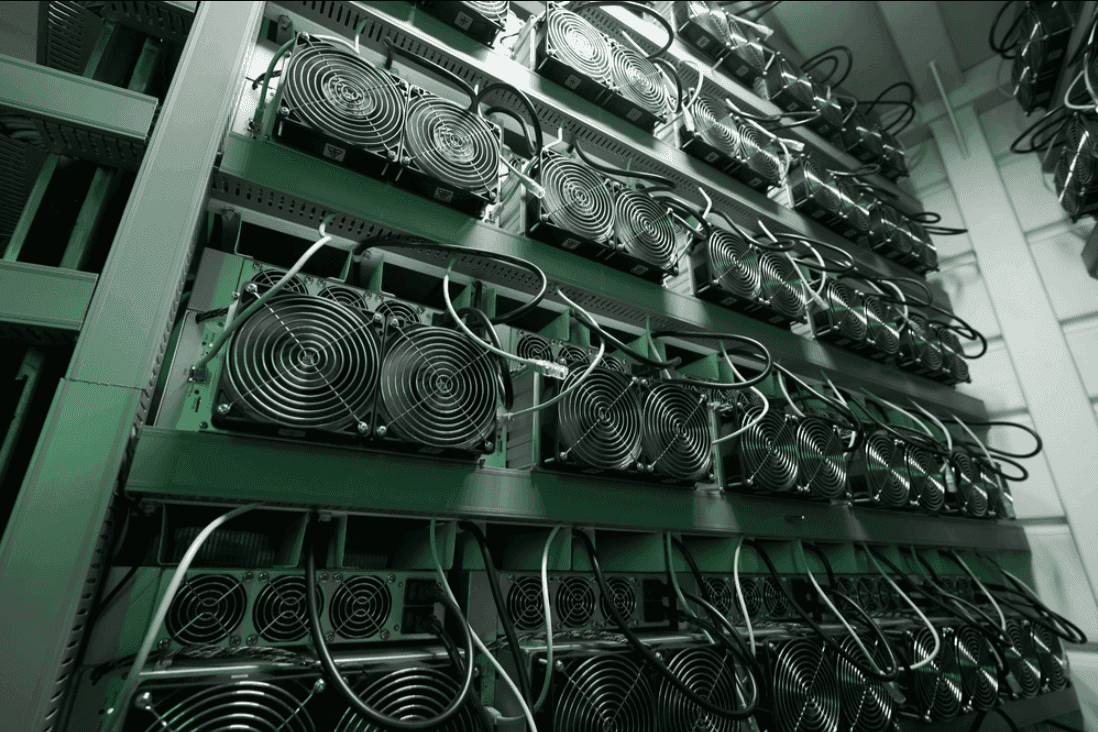
With fundamentals in place, we can tackle the core question directly: Does mining profitably fit your situation? Instead of guessing, we’ll build a simple mental model you can plug numbers into.
This section walks you through the variables that drive profitability, the formulas that tie them together, some example scenarios, and a direct comparison between mining and simply buying XMR.
The Key Variables That Decide Profit
Everything about mining profit boils down to a small set of variables:
- Your hashrate (H): How many hashes per second your rig can perform on RandomX
- Network hashrate (NH): The sum of everybody else’s hashrate
- Block reward (R): Roughly 0.6 XMR in tail emission, plus fees
- Blocks per day (B): About 720
- XMR price (P): The market price of XMR in your fiat currency
- Power draw (W): How many watts your rig pulls while mining
- Electricity cost (E): Your price per kWh from your utility
- Pool fees and misc. costs (F): Pool percentage, downtime, maintenance
All profitability tools and calculators are just UI layers around these same concepts. If you understand them in plain language, you’re not at the mercy of any specific site. For example, CoinWarz’s Monero mining calculator, Minerstat’s XMR page, and WhatToMine for XMR all implement these variables under the hood.
Profitability Formulas (Plain English + Simple Math)
Here’s how the numbers connect when you calculate Monero mining profit.
1. Your share of the network hashrate
Share = Your hashrate (H) ÷ Network hashrate (NH)
This tells you what percentage of the network’s mining work you contribute.
2. Expected XMR earned per day
XMR per day = (H ÷ NH) × Blocks per day × Block reward
You get a rough estimate of how much XMR your rig produces in 24 hours.
3. Convert XMR to daily revenue
Revenue per day = XMR per day × Price of XMR
That gives you your mining income in fiat.
4. Electricity cost per day
Step A: Convert watts to kilowatts
kW = Watts ÷ 1000
Step B: Daily energy use
kWh per day = kW × 24
Step C: Daily electricity bill
Electricity per day = kWh per day × Cost per kWh
5. Daily profit before hardware repayment
Profit per day = Revenue per day − Electricity per day − Pool fees or other costs
Nothing here is complicated. The accuracy of the result depends entirely on the inputs: your real hashrate, the current network difficulty, your local electricity rate, and the current XMR price.
Worked Examples: Cheap, Average, and Expensive Power
Let’s run simple stylised examples, with round numbers.
Assume:
- You have a rig that makes XMR worth $2.50 per day at the current price and difficulty.
- Your rig draws 150 W constantly while mining.
Now look at three different electricity prices.
Scenario 1: Cheap power ($0.05 / kWh)
- Power draw: 150 W = 0.15 kW.
- Daily energy: 0.15 × 24 = 3.6 kWh.
- Electricity cost: 3.6 × 0.05 = $0.18/day.
- Profit: 2.50 − 0.18 = $2.32/day (minus any pool fee).
In this world, mining looks reasonable. ROI might still be slow, but you are clearly in the green.
Scenario 2: Mid-range power ($0.10 / kWh)
- Electricity cost: 3.6 × 0.10 = $0.36/day.
- Profit: 2.50 − 0.36 = $2.14/day.
Still profitable, though harder to justify expensive hardware.
Scenario 3: Expensive power ($0.20 / kWh)
- Electricity cost: 3.6 × 0.20 = $0.72/day.
- Profit: 2.50 − 0.72 = $1.78/day.
Still above zero in this toy setup, but once you add pool fees, downtime, and the reality that hashrate and price move, that margin can evaporate quickly.
Swap in less efficient hardware or a smaller hashrate, and you can easily flip to negative. That’s why people at US $0.20–0.30 / kWh often conclude that mining is more hobby than a business.
Break-even and ROI Timelines
Once you know the daily profit, the next step is how long to break even.
Break-even formula:
Break-even days = Up-front hardware cost ÷ daily profit
Example:
- Hardware cost: $600.
- Profit/day: $1.50.
- Days to break even: 600 ÷ 1.5 = 400 days (over a year).
If network difficulty rises or XMR price falls, that timeline lengthens. If you have downtime or hardware failures, it lengthens again.
So a realistic miner:
- Assumes a slower ROI than the best-case calculation.
- Treats mining as a hybrid of hobby, long-term positioning, and a small cash flow stream, not as a guaranteed fast payback plan.
Find out about our top picks for the best cryptos to mine.
Mining vs. Simply Buying XMR
Now, the key competing option: buying XMR instead of mining it.
Imagine two paths with the same total spend:
- Path A: spend $600 on hardware and $50/month on electricity.
- Path B: spend that same $600 (and future electricity money) directly buying XMR over time.
If mining yields, say, 0.01 XMR/day and you mine for a year, you end up with about 3.65 XMR, minus pool fees. If the same money spent buying XMR would get you more than that at your average entry price, mining loses on pure numbers.
So the reasons people still mine during tight profitability windows are usually:
- They don’t want additional KYC exposure.
- They enjoy the technical side.
- They want to support the network.
- They accept slower returns as part of a broader XMR thesis.
If you care only about maximising XMR stack per dollar and you have no special power advantage, simply buying often wins.
Monero Mining Costs and Hidden Risks
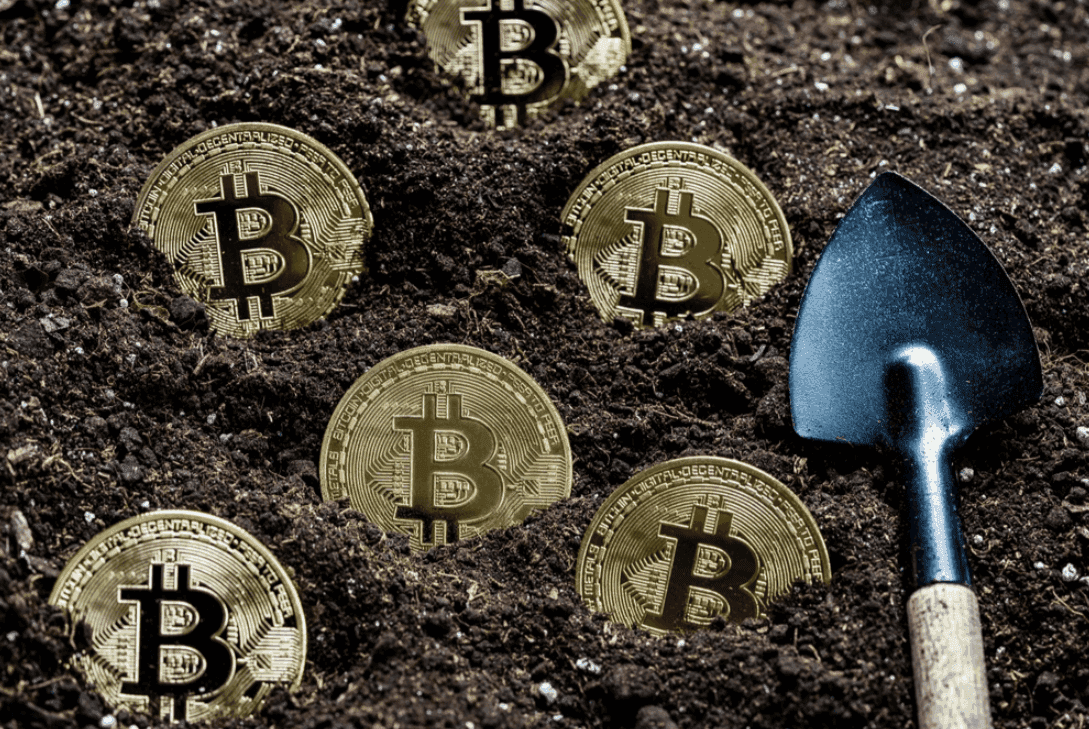
Now that the profit framework is clear, the next step is to lay out every cost and risk that eats into those numbers. Electricity is obvious; plenty of other factors are not. This section translates all the “oh right, I didn’t think of that” items into something you can account for before committing.
Up-front Hardware and Setup Costs
At minimum, you’ll pay for:
- CPU: the main workhorse. For RandomX, you want modern chips with decent L3 cache and solid efficiency. In practice, that might mean anything from a used mid-range CPU around $80–$120 to a new high-end chip in the $250–$450 range, depending on what you choose and where you buy.
- Motherboard and RAM: stable, not fancy, but reliable. RandomX does use memory heavily, so don’t starve it. A compatible motherboard typically sits in the $80–$160 band, and 16–32 GB of RAM will usually add roughly $40–$100 on top.
- Power supply (PSU): good quality, with enough headroom for 24/7 load. A decent 550–750 W PSU from a recognised brand often lands somewhere between $60 and $130, depending on efficiency rating and model.
- Cooling: quality air coolers, maybe additional case fans; in some setups, more advanced cooling. A solid tower cooler might cost around US $40–$90, with case fans adding another 10–$15 each if you need better airflow.
- Storage: a simple SSD is fine; mining itself doesn’t stress storage. A 250–500 GB SSD is commonly in the $25–$60 range.
Then you add less obvious hardware and infrastructure:
- Racks or shelves if you plan more than one rig.
- Extra cabling, power strips, and maybe a basic power meter to measure draw (often $20–$40 for a simple plug-in meter).
- A space where the rig can run 24/7 without cooking your room.
You also “pay” in time for:
- Researching compatible parts.
- Building or assembling the rig.
- Installing OS, drivers, miner software, and all monitoring tools.
Ongoing Costs: Electricity, Cooling, Maintenance
Ongoing costs don’t stop at the meter.
- Electricity: main recurring cost, already covered in the profitability section.
- Cooling: fans consume power; in hot climates, you may end up running air-conditioning more, which adds to your real electricity bill.
- Maintenance: fans clog with dust, thermal paste dries out, and PSUs can fail. Components need replacement every so often, especially under continuous load.
A rig that runs 24/7 at high temperature will age a lot faster than a casual home PC, and that age translates directly into replacement costs.
Hidden Costs You Might Miss
There are also non-obvious costs that show up later:
- Wear and tear: 24/7 load shortens the lifespan of CPUs, PSUs, and fans. That ageing is an invisible expense until something dies.
- Noise: mining rigs can be loud; that can matter in small apartments or shared spaces.
- Heat: In hot climates, extra heat in your room is a real comfort issue. In cold climates, it can be a feature in winter, but that is seasonal.
- Opportunity cost: a mining rig is not gaming or rendering at the same time, unless you compromise one or the other.
- Housing constraints: If your rent includes “all utilities,” a landlord may not appreciate a permanent furnace humming in the corner.
When you fold these into your decision, some borderline cases flip from “maybe OK” to “no, not worth it.” Now, after taking a look at the costs, the question remains the same: can you still make money mining Bitcoin in 2025?
Risk Matrix: Technical, Market, and Regulatory
Finally, you have to look at risk across three axes.
Technical risks:
- Hardware failure from heat or poor power quality.
- Misconfiguration that pushes hardware beyond safe limits.
- Malicious miners or cryptojacking malware, if you download from bad sources.
Market risks:
- XMR price drawdowns that slash your revenue overnight.
- Network hashrate spikes that reduce your reward share.
- Extended periods where difficulty is great, and price is mediocre.
You can keep an eye on hashrate and difficulty shifts via dashboards like xmr.noctism.com or MoneroHash stats.
Regulatory risks:
- Privacy-coin delistings on exchanges that you rely on to convert XMR.
- New rules in your country that put extra pressure on privacy coins or mining in general.
None of these are reasons to avoid mining on their own, but they matter. As you move forward, they inform how much you invest, what timelines you assume, and how much you rely on mining as a “serious” strategy versus a side activity.
Monero Mining Hardware in 2025
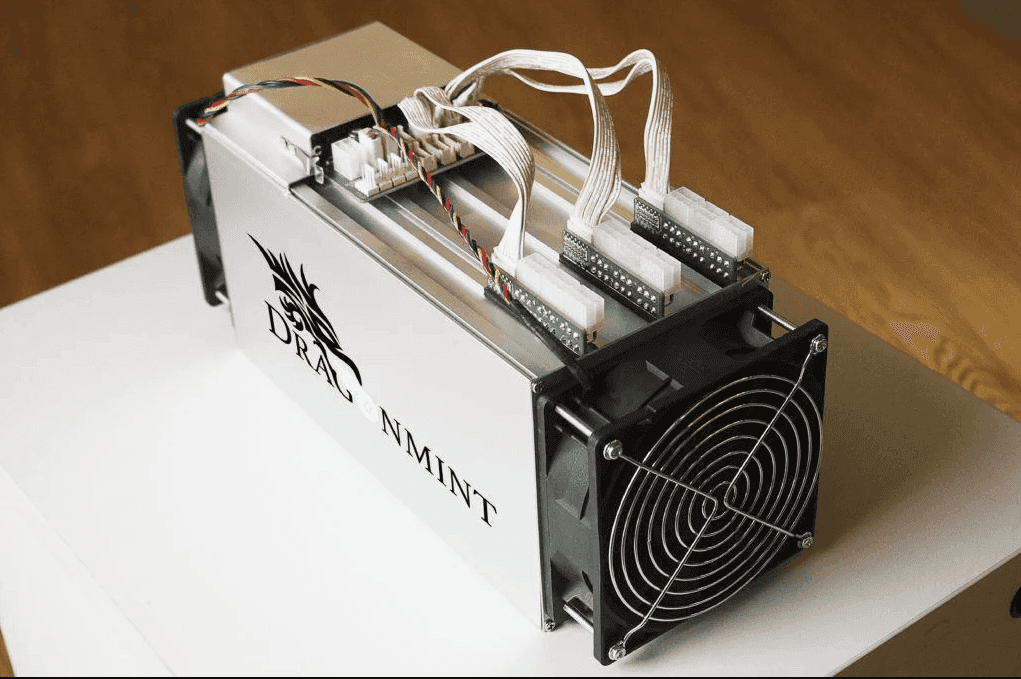
Once you accept that hardware efficiency is the main lever you control, the next step is choosing the right gear. Here, the RandomX design gives you a clear tilt toward CPUs, with GPUs sitting in a supporting role.
This section focuses on what that looks like in 2025, how to think about CPU tiers, when GPUs still make sense, and how to design full setups.
CPU Mining – Still the Core of Monero
RandomX’s whole point is to keep CPUs relevant. In 2025, that remains true.
The algorithm favours:
- High L3 cache.
- Decent memory bandwidth.
- Strong per-core performance.
So the sweet spot tends to be:
- Mid-range to high-end desktop CPUs, especially from lines known for solid cache and efficiency.
- Server-grade CPUs can work well too, but their cost profile often suits larger miners, not a single home rig.
In simple terms: if you’re building a fresh rig strictly for Monero, you usually start by picking the CPU first, then build everything else around it.
For rough hashrate expectations by CPU model, miners often refer to community resources like the XMRig benchmark page or independent sites such as Monero Benchmarks.
Recommended CPU Tiers
Think of CPU choices in three tiers.
- Budget CPUs
- Older Ryzen or Intel desktop chips bought used or on discount.
- Upside: Low price, good entry point if you already have one.
- Downside: Worse hash-per-watt than modern options, so you lean harder on cheap electricity.
- Mid-range CPUs
- Current-gen Ryzen 7/9 or Intel i7/i9 chips.
- Upside: Strong performance, better efficiency, easier to justify if you also use the machine for work or gaming.
- Downside: Higher entry cost.
- High-end/dedicated CPUs
- Top-tier desktop or server chips in a rig that exists purely to mine.
- Upside: Maximum hashrate in a compact package, good hash-per-watt when tuned.
- Downside: Big ticket hardware, so ROI depends heavily on power price and XMR price.
GPU Mining – When It Still Makes Sense
GPUs used to dominate many coins. With Monero’s RandomX, they’re secondary.
GPU mining can still make sense when:
- You already own gaming or workstation GPUs that sit idle for much of the day.
- You want a flexible rig that can switch between XMR and other GPU-friendly coins.
- You’re experimenting or repurposing older GPUs where the incremental cost is almost zero.
Buying fresh GPUs specifically for Monero rarely makes sense now. On a pure XMR basis, a good CPU build usually delivers a better return per watt and per dollar.
Example Setups: Budget, Mid-range, and Enthusiast
Let’s walk through three stylised setups (all numbers illustrative).
Budget rig
- Older Ryzen CPU, mid-range motherboard, basic PSU, 16 GB RAM.
- Hashrate: maybe ~10 KH/s.
- Power: around 100 W.
- On cheap power, you might clear a small daily profit; on expensive power, you slide toward break-even or negative.
Mid-range rig
- Newer Ryzen 7/9 or Intel i7/i9, 16–32 GB RAM, quality PSU.
- Hashrate: ~30–40 KH/s.
- Power: 130–180 W once tuned.
- With mid-priced electricity, you can still run in the black, though ROI stretches.
Enthusiast rig
- Top-end CPU, tuned for RandomX, with high-quality cooling and a stable board
- Hashrate: 60 KH/s or more.
- Power: maybe 200–250 W with undervolting.
- With cheap electricity, this kind of rig can generate a meaningful daily profit, but the hardware cost is high, so break-even still takes time.
Across all these, the theme repeats: hardware choice and power price are joined at the hip. A strong CPU on expensive power can lose to a weaker CPU on cheap power.
Optimising Hardware for Efficiency and Longevity
Once you’ve picked the hardware, the next job is tuning it for a long, steady run:
- Undervolt and underclock where it makes sense. Many CPUs will give you near-maximum hashrate at slightly lower voltage and frequency, which cuts power draw and heat.
- Keep temperatures under control. Lower temps mean longer lifespan and fewer silent throttling events.
- Use decent thermal paste and airflow. Cheap thermal paste or a half-clogged cooler can shave performance and cut lifespan
- Monitor everything. Use tools to track hashrate, power draw, and temps over time; spot trends early.
Treat the rig like a small server you care about, not a random PC under a desk that you forget about. That mindset alone avoids a lot of costly failures.
Mining Software and Setup (XMRig, XMR-STAK, and Others)
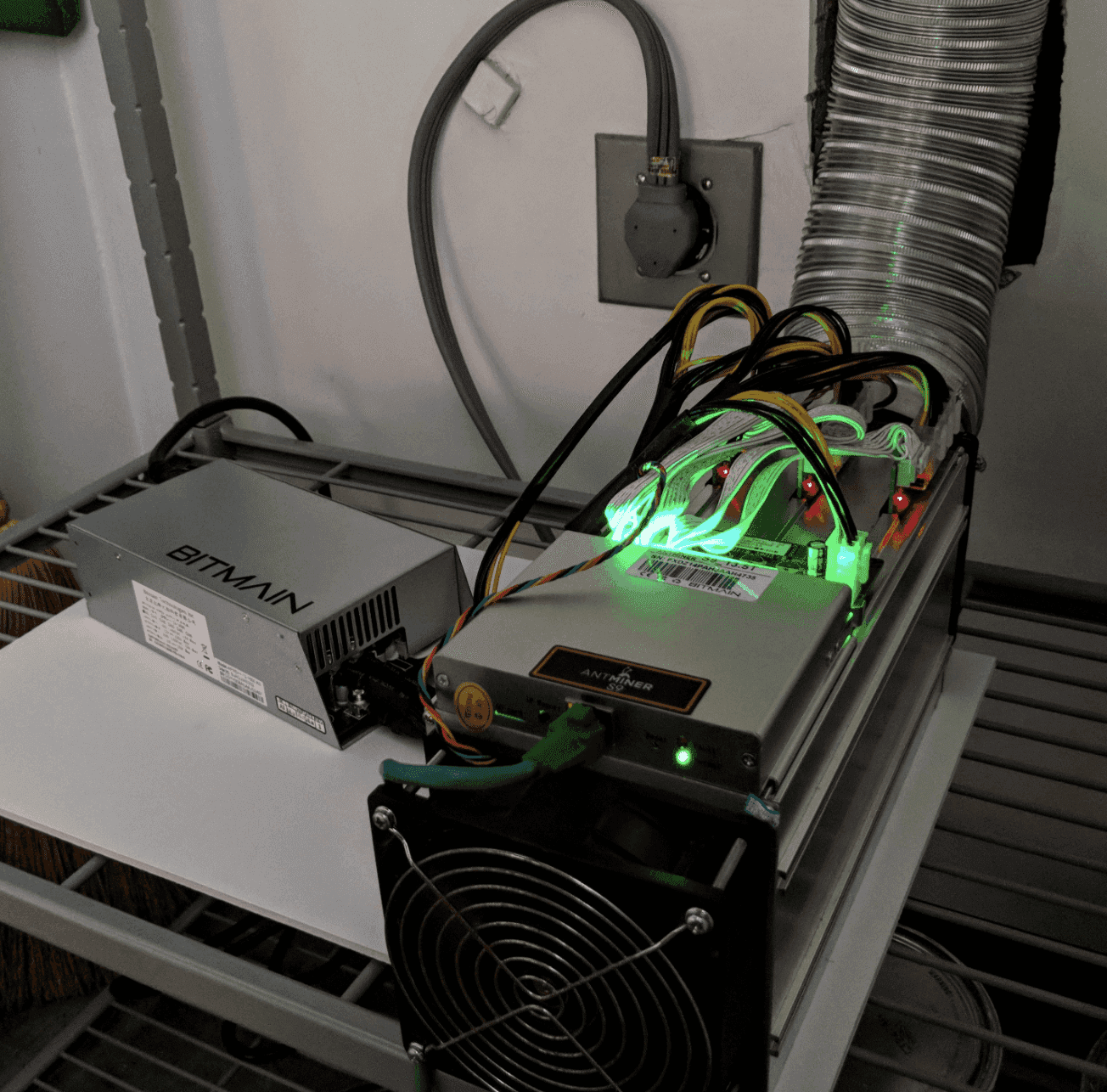
With hardware in place, the next layer is software. This is where you actually “turn electricity into XMR.” Pick the right miner, configure it properly, and set it up securely.
Choosing the Right Mining Software
In 2025, XMRig is still the standard for Monero mining:
- Strong RandomX support.
- Frequent updates.
- Widely used and well documented.
Other miners and forks exist (including older XMR-STAK-style tools), but XMRig is the default that most guides and communities point to. That convention is useful; it means your troubleshooting and tuning experience is shared with many others.
When picking software, you care about:
- Codebase reputation.
- Update cadence.
- Dev fees.
- Ease of configuration.
Quick Software Setup Overview
Once you’ve chosen a miner, the setup flow is straightforward:
- Download from the official source. For XMRig, that’s the GitHub releases page. Never trust random re-uploads.
- Verify integrity.
- Where possible, check the checksum or signature.
- Add your wallet address.
- Add your pool or P2Pool node address, including port.
- Set a worker name if you want to distinguish machines.
- Configure performance parameters.
- Number of threads.
- Huge pages and memory options on Linux, if you use it.
- Run a test.
- Start the miner.
- Check that it connects, submits shares, and reports a stable hashrate.
- Start monitoring.
- Track power and temperature using OS tools, hardware monitors, or external meters.
That initial pass doesn’t need to be perfect; you refine things as you learn what your rig can handle. Take a look at our top picks for cloud-based crypto mining platforms reviewed and compared in detail.
Configuration and Performance Tuning
Tuning is where you squeeze more from the same watts:
- Start with default thread counts and let the miner auto-tune.
- Gradually increase threads until you see no further hashrate gains or the system becomes unstable.
- Experiment with huge pages and memory settings on Linux, which can give measurable boosts on RandomX.
- Avoid pushing the system so hard that other tasks become impossible; leave a little headroom if you use the machine for anything else.
As you tune, take notes. If one tweak crashes the machine or slashes hashthe rate, you’ll want to know exactly what changed.
Security Best Practices
Mining software is a common attack vector. A few basic habits go a long way:
- Only download miners from official repositories or well-known mirrors.
- Avoid binaries that claim “double hashrate” or similar miracles.
- Keep the OS patched and avoid running your everyday browsing and banking on the same machine if you can.
- Watch CPU load and network traffic; if you ever see mining behaviour you didn’t start, investigate immediately.
Treat the miner as part of your security model, not a side project you leave unsupervised.
Solo vs Pool vs P2Pool: How to Get Paid

Now we shift from “how to mine” to “how you get paid.” Your payout structure depends entirely on whether you mine solo, via a traditional pool, or via a decentralised option like P2Pool.
Solo Mining – Lottery Ticket Mining
Solo mining means your rig communicates directly with the Monero network and tries to find blocks by itself.
- If your hashrate is huge, you might find blocks regularly.
- If your hash rate is low, you might wait months or years without a single hit.
Think of it as buying a lottery ticket with decent odds if you play at an institutional scale, and terrible odds if you play as a tiny participant.
It makes sense mainly if:
- You control an enormous hashrate.
- You like the idea of receiving full block rewards directly, with no pool mapping or fees.
- You are comfortable with long dry spells and uneven cash flow.
For everyone else, the variance is simply too high.
Traditional Mining Pools
Traditional pools smooth that variance out:
- You point your miner at a pool.
- The pool aggregates all miners’ hashrate.
- When the pool finds blocks, it pays out shares based on each miner’s contribution
Upsides:
- Steady payouts instead of giant, random ones.
- Metrics dashboards, worker stats, and simple monitoring.
Downsides:
- Pool fees skim a small percentage.
- Larger pools concentrate mining power, which is not ideal for decentralisation.
- Pool policies can change, and some pools may choose to block or filter specific transactions.
For a single rig or a small farm, a decent pool is usually the simplest choice. Current examples (check your own region and trust preferences) include:
P2Pool – Decentralised Pooling
P2Pool aims to keep the smoothing of pools while avoiding centralisation:
- It uses a peer-to-peer network of mining nodes, rather than a central operator
- When blocks are found, payouts are encoded directly in the block and go straight to miners’ wallets.
- There’s no single pool wallet waiting to distribute funds.
The reference implementation for Monero lives at SChernykh’s P2Pool repo.
Upsides:
- More aligned with Monero’s decentralised ethos.
- Often lower or zero traditional pool fee.
- Less single-point policy risk.
Trade-offs:
- Setup can be slightly more technical than pointing at a big pool.
- Variance is higher than in a huge centralised pool because you’re sharing with a smaller swarm.
If you want consistent-ish payouts, but care strongly about decentralisation, P2Pool is a good middle path.
How to Choose the Right Option for You
A simple decision lens:
- You care about simplicity and steady payouts → join a respected traditional pool.
- You care about decentralisation and direct payouts → set up on P2Pool.
- You have massive hashrate and plenty of patience → solo mining becomes viable.
You can always start with a pool, learn the ropes, and move to P2Pool later once you’re comfortable.
Here is an in-depth comparison of solo mining and pool mining.
Network Health and On-Chain Metrics

Understanding network health helps you read the mining environment instead of flying blind. Hashrate, difficulty, and transaction volume all feed into your risk and return profile.
Hashrate Trends and Security
Network hashrate shows:
- How much total computing power is securing Monero?
- How intense the competition is for block rewards.
A steady or rising hashrate generally means:
- More miners see value in XMR.
- Your share of that reward pie shrinks unless you increase your own hashrate.
- The network is harder to attack.
You can watch these trends on public dashboards such as xmr.noctism.com or chart aggregators like BitInfoCharts’ Monero section. For miners, this is a double-edged sword: great for the coin, tough on your margin.
Mining Difficulty and Block Time
Difficulty is the network’s built-in adjustment system that keeps block time close to Monero’s target of 2 minutes.
- If the hashrate climbs, the difficulty rises, so blocks don’t arrive too fast.
- If the hashrate drops, the difficulty falls, so block production doesn’t lag.
Because your expected XMR/day is tied directly to your share of the network’s total work, a sudden difficulty spike is effectively a pay cut unless the XMR price rises at the same time.
Watching difficulty charts over time helps you understand whether:
- You’re entering a period where the network is relatively stable.
- You’re joining during an arms race where many new rigs are coming online and squeezing margins.
Transaction Volume and Real Usage
Mining only matters if the asset you earn has real, sustained demand. Monero’s on-chain activity gives you clear clues about whether the market still values what XMR offers.
Recent network data shows:
- Monero processes roughly 23,000–24,000 transactions per day, based on current readings from BitInfoCharts
- The network hit over 100,000 daily transactions during a major spike in March 2024, documented by Monero Observer, showing the network can absorb high load when usage surges.
These numbers consistently place Monero among the most-used privacy coins in the world, far ahead of niche competitors.
Why real usage matters for miners
Real transaction volume is more than a vanity metric; it’s the backbone of long-term economic viability.
- It shows Monero is being used for its privacy properties, not just held as an asset.
- It demonstrates that XMR remains a functioning medium of exchange in communities that need confidentiality.
- It indicates continuing interest from people who rely on Monero’s features, not just its market cap.
Analytics platforms like BitInfoCharts and market intelligence tools from Messari help you track these trends.
When usage is stable or rising, it strengthens the case that Monero’s price has long-run justification. That, in turn, gives miners more confidence in long-term ROI, even through periods where difficulty rises faster than price.
Market, Regulation, and Exchange Access in 2025
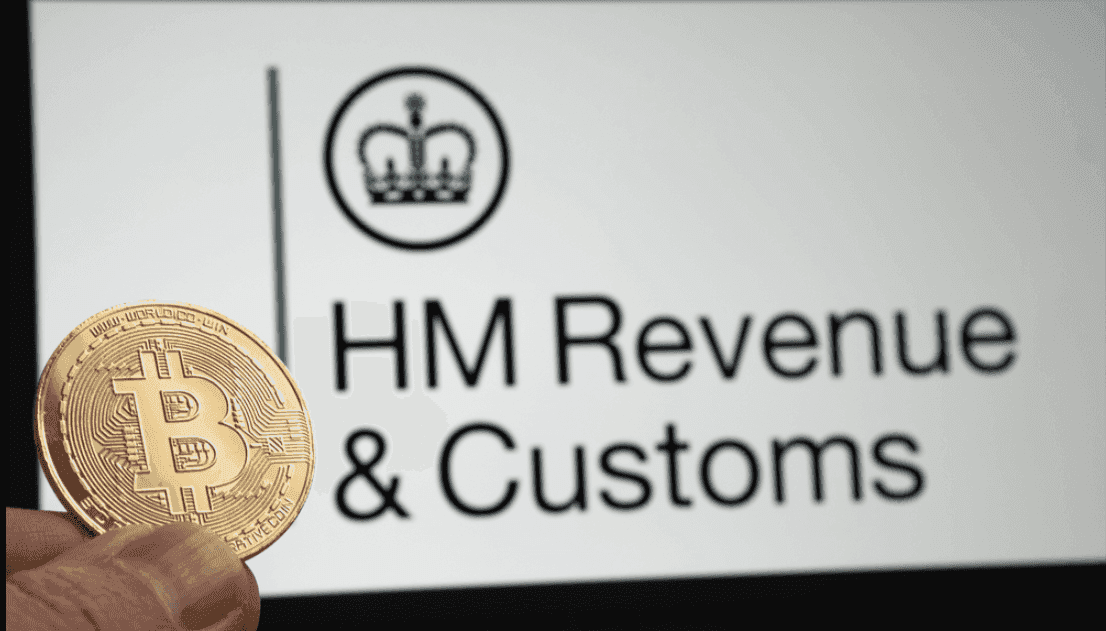
Mining isn’t just about hardware, software, and electricity. Your ability to sell, swap, or store value depends heavily on where Monero is still supported and how regulators treat privacy coins. This is where things get political, fragmented, and sometimes unpredictable. If you’re assessing mining from a practical standpoint, you need a clear picture of where liquidity exists today, what signs to monitor, and how rules can shift overnight.
This section takes your original outline and expands it with real-world detail, supported by official links.
Where You Can Still Buy and Sell XMR
Even in 2025, Monero remains available on several exchanges, though access varies by region and regulatory stance. For miners, this isn’t just trivia, it’s the difference between having a reliable off-ramp and being stuck with coins you can’t easily move.
Centralised Exchanges That Still List XMR
Several global and regional exchanges continue to support Monero trading pairs:
- KuCoin still offers XMR trading pairs and withdrawals
- Gate.io — a long-standing exchange that retains XMR markets
- Bitfinex — supports XMR/USD and XMR/BTC pairs
- Bybit (depending on region)
- Kraken (US only) still supports Monero as of 2025, even though Kraken UK delisted XMR in 2021
Why this matters for miners:
Liquidity shapes the real-world value of the XMR you mine. If an exchange delists the asset in your region, your off-ramp narrows, spreads widen, and the friction cost of converting XMR to fiat or another crypto increases.
DEX Options That Support XMR
Because Monero is not an ERC-20 token and runs on its own chain, DEX access isn’t universal. Still, a few reliable non-custodial routes exist:
- Haveno (open-source Monero-focused DEX)
- Peer-to-peer hubs continue operating in various regions.
- COMIT-based atomic swap tools (e.g., XMR–BTC swaps)
- SideShift.ai (swap service, no account required)
Why DEX access matters:
Miners often prefer privacy-preserving exit routes. Centralised exchanges may require strict KYC, while DEX and P2P markets allow movement of XMR without linking identity unless necessary.
Why Exchange Access Shapes Mining Economics
If you’re mining to accumulate XMR long-term, liquidity matters less. If you plan to:
- sell XMR frequently
- pay bills with mining income
- rotate into BTC or stablecoins
- arbitrage regional price differences
…then ongoing access to exchanges becomes part of your profitability calculation. Smooth liquidity means tighter spreads, predictable income, and fewer surprises. A sudden delisting adds cost, time, and risk to every payout you convert.
Delistings and Crackdowns: Reading the Signals
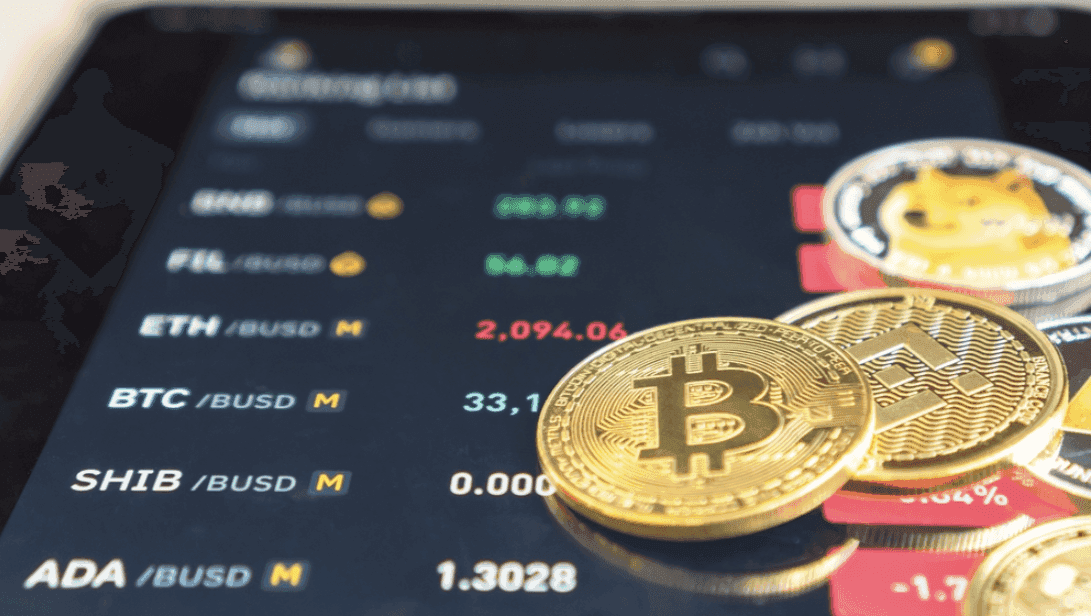
Monero sits in a sensitive category. Every time a regulator cracks down on privacy tools, exchanges react. As a miner, these reactions can alter your economics even if your hardware keeps running perfectly.
Recent Examples and Their Meaning
- Kraken UK delisted Monero in 2021 under pressure from the FCA.
- Users in the UK lost their primary XMR–GBP route overnight.
- Binance delisted Monero in multiple European regions in 2024, reinstated some markets later, and continues to adjust XMR policy depending on jurisdiction.
These events hint at a larger pattern: privacy coins are often the first assets to come under scrutiny when exchanges face regulatory audits or licensing renewals.
Why This Is Regulatory Risk, Not Just Exchange Policy
Each delisting temporarily reduces market depth and pushes liquidity toward fewer platforms. For miners, this can mean:
- Lower prices in the short term
- Less predictable sell-side execution
- Wider spreads
- Fewer fiat pairs
XMR is deeply liquid globally, but local access can shift quickly. If you mine in a region where large exchanges delist privacy coins, you may end up relying entirely on P2P, DEX routes, or cross-border accounts.
The “Canary in the Coal Mine” Concept
Monero often acts as an early indicator of a region’s privacy tolerance.
When regulators pressure exchanges to remove XMR:
- It signals stricter AML/KYC enforcement coming for other privacy-preserving tools.
- It hints at tighter rules around self-custody and coin mixing
- It sets the stage for a potential CBDC rollout or increased financial surveillance
For miners, this doesn’t mean “stop mining,” but it does mean reading these signs as part of your long-term strategy rather than reacting after the fact.
Privacy Coin Regulations and Their Impact on Mining
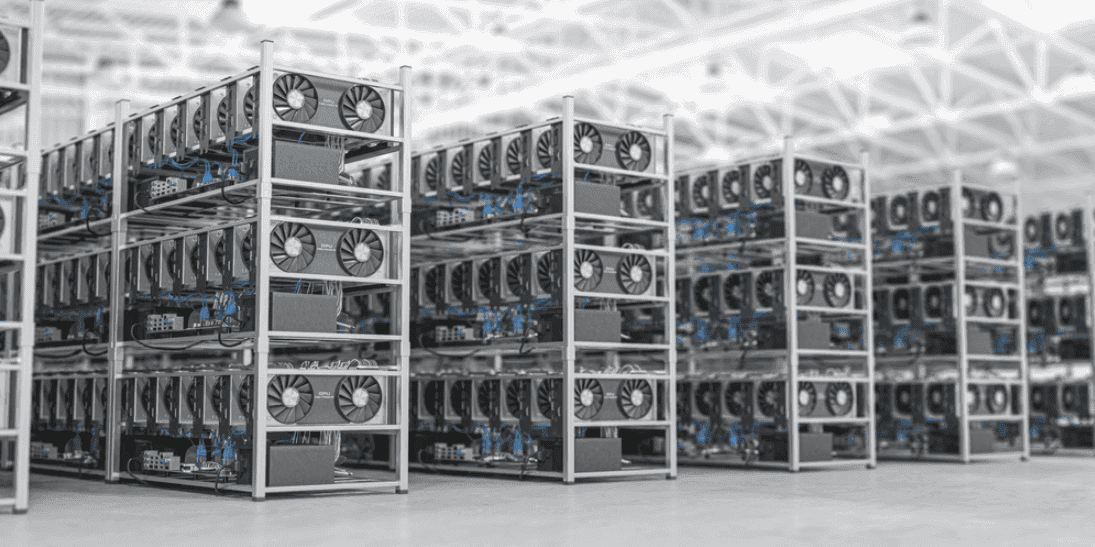
Monero is not illegal in most jurisdictions. But the rules around how you obtain or convert it can shift depending on local financial laws.
AML/KYC Pressures on Exchanges
Across the US, EU, UK, Australia, and parts of Asia, regulators have increased pressure on exchanges to:
- Identify privacy coin users
- Track transactions more aggressively
- Report suspicious withdrawal patterns
- Apply enhanced due diligence to non-transparent assets
This leads exchanges to:
- Restrict XMR withdrawals
- Require extra KYC steps
- Limit XMR trading pairs
- Delist the asset when compliance costs rise
Potential Scrutiny in Some Jurisdictions
Countries like Japan and South Korea banned privacy coin trading years ago. Others are considering similar measures.
Examples:
- Japan’s FSA removed privacy coins from exchanges in 2018
- South Korea enforced a privacy coin trading ban in 2021
These moves don’t outlaw possession or mining but restrict liquidity. If your mining strategy assumes frequent conversions, you need to track these trends.
Why Some Miners Are Willing to Mine at a Loss
A unique part of the Monero ecosystem is miners who treat XMR not as a commodity but as insurance.
Reasons include:
- Hedging against a future with CBDCs and full transaction surveillance
- Maintaining access to private digital cash
- Supporting an open-source project that protects financial freedom
- Preferring KYC-free coin acquisition even if electricity costs exceed short-term profit
This mindset explains why Monero mining remains resilient despite regulatory pressure and thin margins.
Everything here is informational. Regulations change rapidly, and miners should always understand local rules before scaling operations.
Storing and Using Your Mined Monero
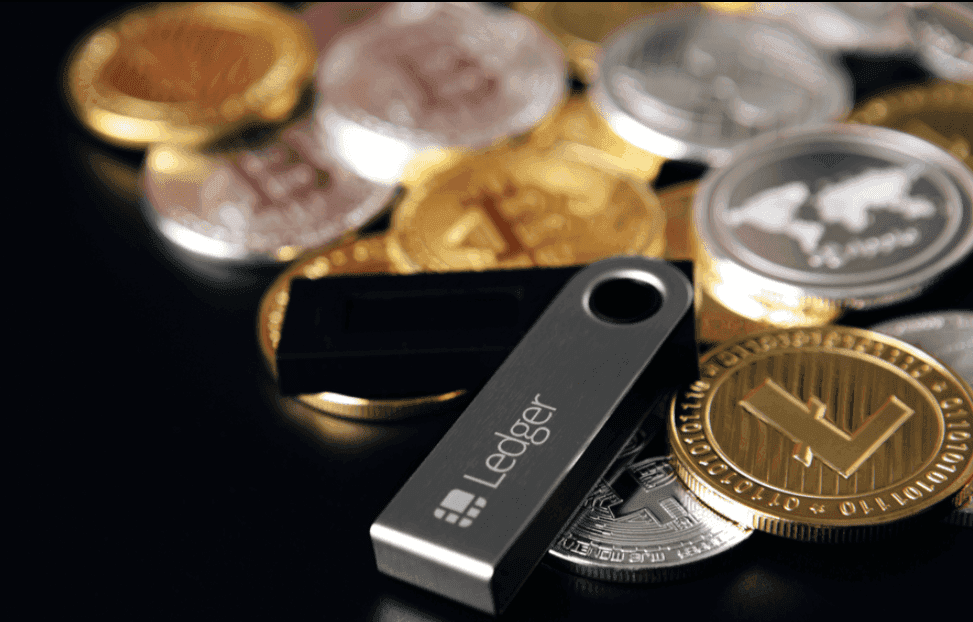
Earning XMR is one side of the story. Keeping it safe and actually using it is the other half. This section acts as a mini decision guide for wallets, basic safety, and common use paths for the coins you mine.
Choosing a Wallet for Your XMR
You have several wallet categories, each with trade-offs.
- Hardware wallets
- Desktop wallets (GUI/CLI, Feather, etc.)
- Good balance for active miners: easy access, reasonable security.
- Ideal if the mining machine is also a desktop you control.
- The official GUI/CLI wallets are on the GetMonero downloads page.
- Feather Wallet is a popular lightweight desktop option.
- Mobile wallets (e.g., Cake, Monerujo)
- Handy for spending and small day-to-day balances.
- Fine for payouts too, though long-term storage is better on a desktop or hardware.
- Cake Wallet and Monerujo are common choices.
- Web / light wallets
- Quick and convenient, but it adds third-party trust and attack surface.
- More suited for smaller balances or rapid testing than for big mining balances.
- MyMonero is one of the well-known web/light wallets.
Most miners combine options: a desktop or hardware wallet for main funds, a mobile wallet for spending.
Security and Privacy Best Practices
Once you pick your wallet stack, these basics apply:
- Always back up your seed phrase and keep it offline.
- Don’t share or store seeds in cloud notes or screenshots
- Consider running your own node for better privacy; the official node software is available from GetMonero.
- If privacy is central to your mining thesis, avoid mixing mined XMR directly with KYC’d exchange accounts unless that is intentional for your plan.
You’re putting effort into earning these coins. Losing them to sloppy key management hurts far more than any hashrate tweak ever helps.
Spending, Swapping, and Off-Ramping XMR
Finally, decide what those coins are for:
- You can hold them as a long-term bet on privacy and store-of-value potential.
- You can swap them into other assets, either on centralised exchanges (see the markets pages above) or through services and DEX routes that support XMR pairs.
- You can spend them where merchants or individuals accept Monero, especially where privacy is desired. Community resources like Monero’s “Community” page and forums often highlight XMR-accepting projects and services.
The important part is clarity. If your plan is “mine and think later,” you’re more likely to panic sell on a dip or forget to move funds off a vulnerable platform.
Step-by-Step: How to Start Mining Monero in 2025
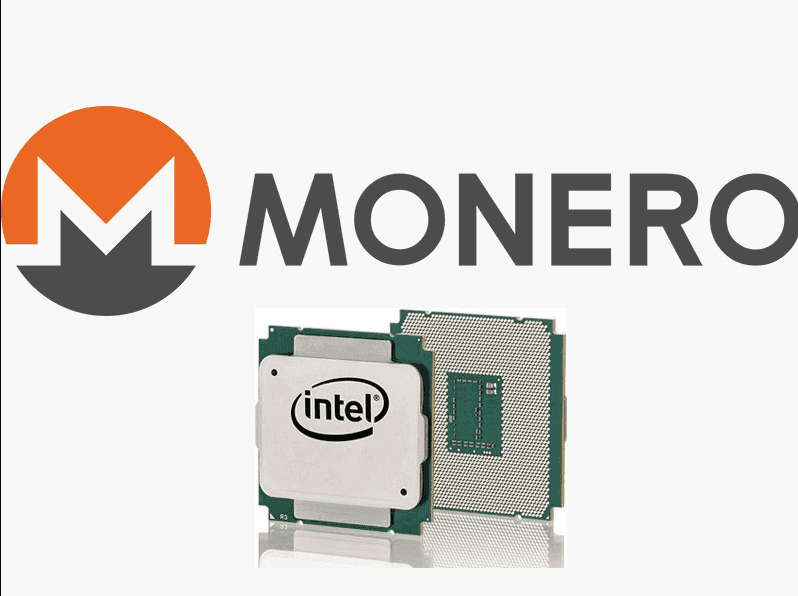
By this point, you understand the “why” and the “what.” This section turns it into a simple “how” so you can go from idea to actual hashrate.
Pre-flight Checklist
Before buying or running anything, confirm:
- Your local electricity price makes even basic sense for a 24/7 power draw.
- You either own suitable hardware or are willing to buy some with clear ROI expectations.
- You have a Monero wallet ready to receive payouts.
- You’re comfortable installing software, editing configs, and monitoring a system.
If any one of those breaks, pause and resolve it first. Skipping straight to “just try it” is the fastest route to wasted money.
10-Step Setup Process
- Create or set up your Monero wallet. This is where all mining payouts will land. Official wallets are on the GetMonero downloads page.
- Check your electricity rate. Look at your utility bill and note the per-kWh price and any tiering.
- Pick your hardware path. Repurpose a current PC, upgrade key parts, or build a dedicated rig.
- Choose your miner software. XMRig is the default option for most people; download from the official releases page.
- Decide on solo, pool, or P2Pool. For almost everyone, starting a standard pool or P2Pool is the best step.
- Download your miner from the official source.
- Verify checksum if available.
- Configure the miner. Insert wallet address, pool address, worker name, and basic performance settings.
- Run an initial test session. Let it mine for a while, watch accepted shares, temps, and hashrate.
- Feed real numbers into a profitability calculator. Use the hashrate and power draw you just measured, not guesses from other people’s rigs. Tools like CoinWarz or Minerstat are made for this.
Decide whether to continue, tweak, or scrap. If the numbers look acceptable given your goals, run it longer and keep tuning. If not, reconsider whether mining fits your situation.
First 30 Days: What to Watch
The first month reveals a lot about how realistic your expectations were.
Keep an eye on:
- Payout pattern: How often you get paid and whether it matches what the pool claims.
- Hashrate stability: Are you seeing random drops, crashes, or thermal throttling?
- Temperature trends: Does the rig run too hot in certain parts of the day or season?
- Real electricity bill: Your first post-mining bill will tell you whether you under-estimated power or cooling needs.
- Network shifts: Big moves in difficulty or price might prompt you to re-run your ROI math.
Use those 30 days like a probation period for your setup. If the experience is miserable or the numbers are far worse than your target, that’s the moment to exit, not after a full year.
Should You Mine Monero in 2025? Final Verdict
If you sidestep those, you’ll either build a reasonable Monero mining setup or you’ll make a clear, rational decision not to, and in both cases, you’ll be ahead of most people who jump in blind.
We’re back at the question we started with. You now have context around fundamentals, math, costs, hardware, software, payouts, network health, regulation, and storage, and all of that leads to one practical decision.
Summary by User Profile
The question remains subjective to what your needs are. Let's take a look at some of the most common persona's in the Web3 industry.
Hobbyists and tinkerers
Start with the hobbyists and tinkerers. If you like hardware, stats, and tweaking systems, and your power price is not outrageous, Monero mining can be a satisfying way to grow a small XMR stack over time. You get both a project and a reward stream, which makes the whole process feel more like a hobby than a chore.
Privacy-first users
Shift to the privacy-first crowd, and the equation changes again. If your main driver is stacking non-KYC XMR and supporting a censorship-resistant network, mining remains attractive even near break-even. In that case, you’re trading some electricity and hardware wear for coins that match your values.
Pure profit-seekers
Then there are the pure profit-seekers. If you just want the largest XMR stack per dollar and you don’t care how you get it, mining only works when you have a serious power advantage or very efficient hardware. In most regular households, a disciplined DCA into XMR will beat a small mining rig on raw numbers.
People with very expensive power or limited tolerance for tinkering
And for people with very expensive power or limited tolerance for tinkering, the answer becomes clear fast. If your electricity rate is high, or you don’t want to touch configs and logs, mining rarely makes sense. It becomes stressful for little or no return, and you’re better off buying XMR or earning it through work.
Alternatives if Mining Doesn’t Make Sense
If that’s where you land, you still have alternatives. You can buy XMR directly on exchanges or P2P platforms, earn it by offering services and asking for Monero payments, or support the ecosystem by running a node or contributing code, documentation, or education. Mining isn’t a one-shot decision; you can always revisit it later if your situation changes, whether that’s cheaper power, a move to a new location, or better hardware deals.
Before you commit, there’s one more layer: the common mistakes that trip people up.
Common Mistakes to Avoid
Avoid these common mistakes, and you sidestep most of the pain points new miners run into.
- Buying expensive hardware without running the numbers first.
- Ignoring electricity and cooling.
- Trusting shady miners/downloads.
- Not securing wallets and backups.
- Overestimating profit and underestimating risk.
Put all this together, and the path becomes much clearer. With the right expectations and awareness, you’ll either build a sensible Monero mining setup or you’ll make a rational choice not to. And in both cases, you’ll be ahead of most people who dive in blind.
Frequently Asked Questions
Monero uses Proof-of-Work, which means miners use their CPU to solve cryptographic puzzles that secure the network, verify transactions, and create new blocks roughly every two minutes. When your machine contributes valid work, you earn a share of the block reward through a pool, P2Pool, or solo mining. Mining is competitive, so the amount you earn depends on your hashrate compared to the total network hashrate.
Monero uses the RandomX algorithm, which is designed to run efficiently on CPUs, so power usage is far lower than Bitcoin mining. A typical Monero mining setup might consume 100–250 watts, similar to a regular desktop under load, so your electricity cost depends mainly on your local price per kWh. It’s not zero, but it’s nowhere near the multi-kilowatt draw seen in ASIC-based mining.
ASIC resistance means the mining algorithm (RandomX) is intentionally built so that specialised mining machines can’t outperform normal CPUs by a huge margin. This keeps mining accessible to regular users instead of large mining farms, helps decentralise network security, and prevents the kind of hardware arms race seen in Bitcoin. ASIC resistance keeps Monero aligned with its “fair mining” philosophy.
Usually not, unless you have very efficient hardware or special electricity rates. In countries where power costs $0.20–$0.30 per kWh or more, your energy bill often cancels out most or all of the daily mining rewards. Many miners in high-cost regions mine for long-term stacking, non-KYC coins, or ideological reasons rather than short-term financial profit, because ROI becomes slow or negative.
Modern CPUs with large L3 cache and strong per-core performance work best, since RandomX is designed for general-purpose hardware. Popular choices include AMD Ryzen 5000/7000 series, Threadripper models, or Intel i7/i9 chips, which offer good “hash per watt.” GPUs can mine Monero, but they are almost always less efficient than CPUs, and ASICs do not provide any advantage.
P2Pool is a decentralised mining pool for Monero where miners connect to a peer-to-peer network instead of a central pool operator. When the network finds a block, payouts go directly to miners’ wallets through the block itself, with no custodian holding your earnings. Traditional pools are centralised, charge fees, and require trusting the operator, while P2Pool keeps mining permissionless, transparent, and censorship-resistant.
You only need a few inputs: your hashrate, the network hashrate, your power draw in watts, your electricity price, and the current XMR price. Plug those into a mining calculator like Minerstat, CoinWarz, or the official Monero profitability tools, and compare your daily revenue to your daily electricity cost. Profit = (XMR mined × price) − power cost − pool fee. Everything depends on your real-world numbers.
The safest method is a hardware wallet like the Ledger Nano X or Trezor Model T, paired with the official Monero GUI or Feather Wallet for full control. Always keep your seed phrase offline and backed up securely. If you use a desktop wallet, make sure your computer is clean, updated, and protected. Avoid leaving large amounts of XMR on exchanges or in web wallets.
Mining itself is legal in most countries as long as you pay your electricity bill and follow local regulations. The legal issues usually relate to privacy coins on exchanges; some regions restrict trading or require enhanced KYC, but mining at home is generally treated the same as running any computational process. You’re responsible for checking tax and reporting rules where you live.
The biggest risks are high electricity costs, hardware wear from 24/7 load, price volatility, and rising network difficulty that can shrink your earnings over time. You can reduce risks by undervolting your CPU, keeping temperatures low, using trusted mining software, joining a reliable pool or P2Pool, tracking your real power cost, and regularly checking difficulty trends. Good tuning and realistic expectations go a long way.
Disclaimer: These are the writer’s opinions and should not be considered investment advice. Readers should do their own research.

